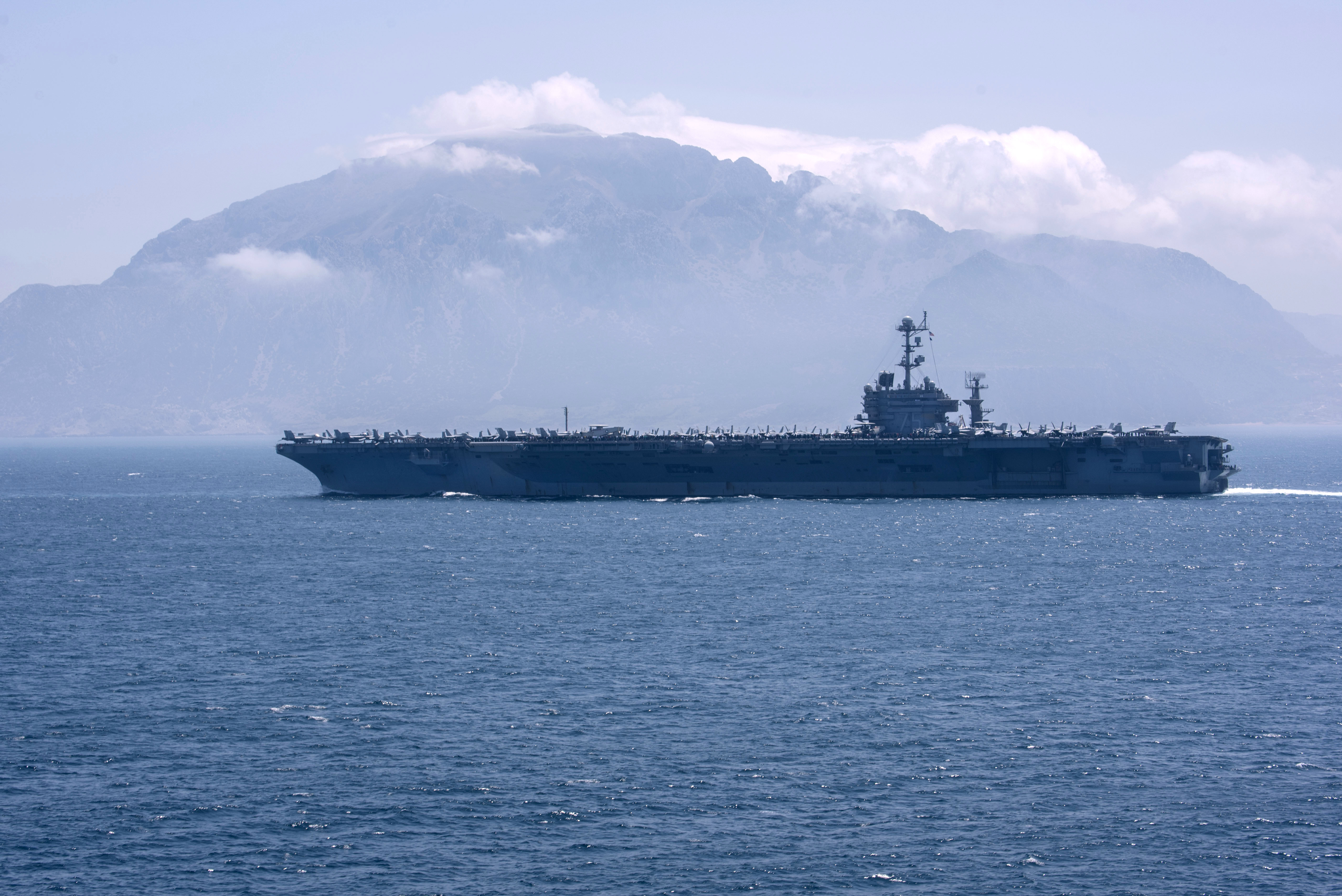
A Pentagon budget plan to sideline an aircraft carrier, rather than refuel it, and redirect money for other defense priorities would save just $16.9 million in Fiscal Year 2020, USNI News has learned.
That money in the next fiscal year is the first of the estimated $5.5 billion Pentagon officials are intending to zero out over the next several years for the planned refueling and complex overhaul of USS Harry S. Truman (CVN-75), several sources familiar with the plan confirmed to USNI News on Thursday.
Last year’s budget documents show the Navy had planned on investing $1.5 billion from 2020 and 2023 to begin planning the Truman overhaul. The planned $16.9 million Truman line-item in FY 2020 would have gone to Huntington Ingalls Industries’ Newport News Shipbuilding yard in Virginia for early planning work and advanced procurement, according to the FY 2019 budget submission.
Instead of the mid-life refueling, the Office of the Secretary of Defense has directed the Navy to route the money into newer emerging capabilities like armed unmanned naval systems and would ultimately cut Truman‘s service life in half, several sources familiar with the intent of the move told USNI News on Thursday. Taking Truman out of the fleet would bring the operational carrier force down from its legally mandated total of 11 to 10. The most recent Navy force structure assessment called for an increase in the carrier fleet to 12 flattops.
On Wednesday, The Washington Post included the detail of the Pentagon canceling the overhaul in an opinion piece about acting Defense Secretary Patrick Shanahan’s, stating that the decision to cut a carrier from the force was Shanahan’s compromise to go along with a recent two-carrier contract, which the opinion piece stated the acting secretary opposed.
“Shanahan opposed buying the carriers in internal debates, but facing opposition, he settled for a compromise: The Navy will shelve plans to rehab one of its midlife carriers,” read the piece. USNI News confirmed the account was largely accurate from multiple sources familiar with the conversations.
Spokesmen with OSD and the Navy told USNI News on Thursday that they could not comment on the FY 2020 budget ahead of the submission to Congress. As of Thursday, USNI News understands the budget will be rolled out in mid-March.
In late January, Jane’s Defence Weekly reported that OSD was considering a delay in the Truman RCOH to direct funds to more modern weapon systems and left open the possibility that the RCOH would only be delayed and not abandoned altogether. However, several sources told USNI News on Thursday that the complexities and difficulties in the process of moving the spent fuel out of the carrier and refueling it would likely mean that if Truman missed the RCOH window, the carrier would cease to be operationally relevant. While the cost of the overhaul is $5.5 billion, decommissioning the carrier and removing the nuclear fuel could cost around $2.5 billion, according to a report in Defense Daily from 2014 that discussed a similar budget negotiation surrounding the USS George Washington (CVN-73) RCOH.
The move has already drawn the ire of pro-carrier members of Congress.
“Keeping refueling and complex overhauls on schedule and advanced procurement funded properly is critical to meeting combatant commander’s demand for carrier strike groups,” Rep. Rob Wittman (R-Va.), the ranking member of the House Armed Services seapower and projections forces subcommittee, told USNI News in a Thursday statement.
“We have made a significant investment in these ships, and I am perplexed why anyone would consider taking the cornerstone of the United States Naval Force and allowing it to atrophy.”
Canceling the RCOH for Truman is the latest attempt for Pentagon leaders to find cost savings in curtailing the mid-life overhaul of Nimitz-class carriers. Costing billions and lasting four years, the refueling of the carrier’s two reactors and the down-to-the-bulkhead overhaul has been targeted for cuts over the last 20 years.
In 2014, the Navy fought to keep $7 billion in then-year dollars in the FYDP to overhaul George Washington, which was at risk due to sequestration limits as part of the Budget Control Act of 2011. That total included the cost of the refueling, the cost of manning and operating the carrier air wing and continuing to buy aircraft for the air wing. Ultimately, Congress found an additional $800 million to keep the Washington RCOH on track in FY 2015, as well as the remaining funding in the long term, and preserved the air wing. It’s unclear if the new Pentagon plan would also cut an air wing.
Given how small a sum OSD intends to zero out in FY 2020, the likelihood of Congress inserting the funds to keep the process moving forward is high, USNI News understands.





